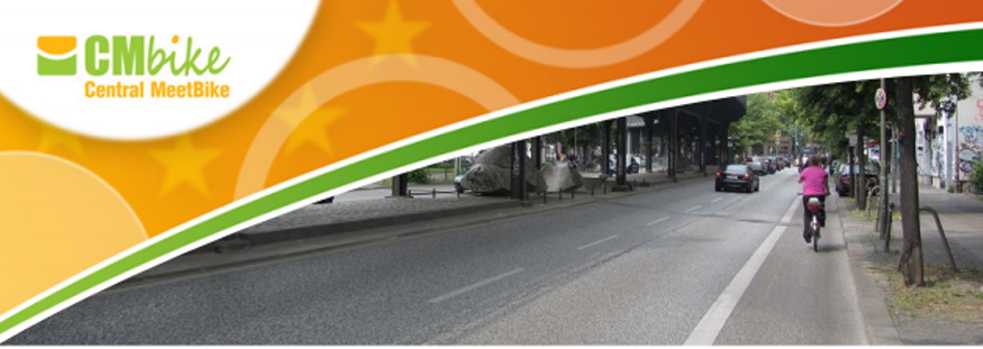9220598088

Fact Sheet H-02 - Cycling Facilities on the Road
Street space is a limited resource. The process of Street design must therefore take into account the demands of all Street users under consideration of the surroundmg land uses and the function of the Street. Contrary to the historlcal emphasis on the flow of motor vehicles. Cycling Expertise Fact Sheet 1-02. in reference to German guidlines [FGSV (2010)]. emphasises that Street design should be conside-red “from the edge of the road to the middle" [Thiemann-
|
Linden (2010). p.2], ensunng that pedestrians and cyc- • Dedicated combmed bus and bicycle lane lists are taken into consideration even when road width • Bicycle streets | |
|
Main Considerations for Dividing Street Space |
Additional Criteria |
|
Road type within the transport network and predo-minant surrounding uses (are significant levels of pedestrians. cyclists or deliveries to be expected?) |
Freąuency of junctions and property access points (amount and freąuency of tuming vehicles) - the greater the number and higher the frequency of tur-ning vehides. the greater the need for keeping cydists on the carriageway) |
|
Presence of public transit |
Proportion of heavy goods vehides |
|
Expected volumes of motorised and non-motorised traffic |
Type of vehides parking along the Street - tumover frequency (how often are vehides pulling in and out), double-parking. amount of delhrery vehicles. etc. |
|
Width of available Street space TaWe 1: Considerations lor Owston of Street soace amonast roi |
Street gradient id users (based on FGSV (2006). |
p.15 and FGSV (2010). p20p)
is limited.
Due to space and safety considerations it is not always pos-sible or advisable to provide separated infrastructure for each road user group. The choice of cycling facility depends to a lar-ge extent on the available Street space and the speed of moto-rised traffic [FGSV (2010)].
Cyde provision on urban roads can be dassified into:
• Mixed traffic on the carriageway
• Advisory lanes
• Bicycle lanes
Types of cycle provision

The initial approach when choosing a type of cycle provision in German gui-delines typically depends on carriageway width. car traffic volumes and motor vehicłe speeds along with the four main considerations listed in Table 1.
In generał, the higher car volumes and speeds are the greater the degree of separation between cyclists and motorised traffic. However the type of cycle provision should be decided on a case-by-case basis whilst considering the four main pomts listed above as
well as the additional chteha.
Mixed traffic is recogmsed in German guidelines as generally acceptab-le for streets with narrow camageways and Iow traffic volumes ( < 700 vehides per hour (veh/h)). Some carriageway widths can be problematic when a dri-ver tries to overtake a cyclist agamst oncommg traffic (see Safety Considerations on next page). If there is kerb-side car parking a clearance distance needs to be maintamed between cyclists and parked cars. for example by extendmg the kerb at certain intervals between parking spaces (see image above). In generał. mixed traffic is the standard in speed 30 zones. where car volumes are Iow.
Whenever the attention of drivers needs to increased due to the pre-sence of cyclists. plctograms might be a feasible measure sińce they are already often used in the Czech Repu-blic. Even though this is not a legally reserved space for cyclists. experierv ces from the Czech Republic show that

Wyszukiwarka
Podobne podstrony:
SCMbtice/ Central MeetBike A Fact SheetH-03 - Cycling Facilities off the RoadApplication of cycle
18
Fact Sheet S-02 - Targeting Public Relations Introduction Start ot Underganon When a chtM int leanis
00240 ?e77afc2d2959074307e464c36ca12e 242 Yander Wiel on the ąuality of measurements the device can
00332 ?133d2464eb28601d2d991683b45647 335 Optimizing Defect Levels and Losses from Gage Errors on t
skanowanie0082 (2) comprehension on the part of the students, they will not be able to reproduce it;
Theoretical and Methodological Problems 13 and social and economic areas in a presentation on the im
(31) In order to increase the availability of information on the use of medicinal products in t
CONTENTS L. Starkel: Progress in research on the evolution of the geographical environment of Poland
70. A.69057 ECONOMIST on Wall Street : notes on the sanctity of gold, the value of
JPRS-UMS-92-003 16 March 1992ANALYSIS, TESTING 13 The Effect of a Free Surface on the Distribution o
28FERROUS METALS JPRS-UMS-92-003 16 March 1992 The Effect of Argon łon Channeling on the Sputtering
więcej podobnych podstron